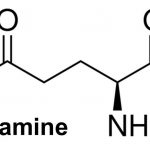Contents
- 1 How Often Does Clinically Isolated Syndrome Turn Into MS?
- 1.0.1 What is the difference between CIS and MS?
- 1.0.2 What are the symptoms of clinically isolated syndrome?
- 1.0.3 4 disorders associated with CIS
- 1.0.4 What are the risk factors of clinically isolated syndrome (CIS)?
- 1.0.5 What are the treatment options for clinically isolated syndrome?
- 1.0.6 How is clinically isolated syndrome diagnosed?
How Often Does Clinically Isolated Syndrome Turn Into MS?
Both multiple sclerosis (MS) and clinically isolated syndrome (CIS) are complex autoimmune neurodegenerative diseases with multiple triggers.
Clinically isolated syndrome (CIS) is the first episode of MS, but not all CIS patients develop MS.
- Studies show about 60 to 85% of MS patients had symptoms of CIS about 20 years before MS diagnosis.
- The shift from CIS to more advanced stages is unclear.
The risk of developing MS increases by 60 to 80% when a CIS patient’s MRI detects brain lesions like those in MS. A second episode of neurological conditions or MS diagnosis usually occurs within a few years.
If a CIS patient’s MRI does not show brain lesions, the probability of acquiring MS is low (about 20%).
Cohort studies on CIS natural history demonstrate four stages:
- Clinically isolated syndrome (CIS)
- Relapsing-remitting multiple sclerosis (RRMS)
- Secondary progressive multiple sclerosis (SPMS)
- Death
What is the difference between CIS and MS?
Both MS and CIS are complex autoimmune neurodegenerative diseases. The myelin sheath around neurons is damaged (demyelination), interfering with nerve impulse transmission and causing neurological conditions.
Clinically isolated syndrome (CIS)
- CIS is a single episode of a neurological condition lasting up to 24 hours, usually affecting optic nerves, the brainstem, or spinal cord.
- An MRI of a person with CIS may indicate location-specific damage.
- Treatment for CIS depends on symptoms, and acute episodes may require intravenous steroid application.
Multiple sclerosis (MS)
- MS is a lifelong condition with recurring neurological conditions like vision problems, mobility issues, and cognitive impairment.
- MS is diagnosed after a secondary clinical episode of CIS.
- An MRI with MS may show multiple lesions in the brain and spinal cord.
- The cerebrospinal fluid shows oligoclonal bands.
- Evoked potential tests assess sensory and motor nerves to evaluate MS.
- MS is treated with various drugs, including symptomatic treatment, steroids, and disease-modifying drugs, to reduce flare-ups.
QUESTION
What are the symptoms of clinically isolated syndrome?
CIS symptoms depend on the location of the injury in the brain or spinal cord. Common CIS symptoms include:
- Fatigue
- Dizziness
- Vision problems
- Numbness
- Tingling
- Muscle weakness
- Muscle stiffness
- Uncontrolled movements
- Paralysis
- Difficulty walking and coordinating
- Sexual dysfunction
- Bladder and bowel incontinence
4 disorders associated with CIS
- Optic neuritis: Damage, swelling, or inflammation to the optic nerve causing pain, temporary vision loss, impaired color vision, and pain with eye movement.
- Transverse myelitis: Spinal cord damage with symptoms like muscle weakness, numbness, or tingling in the toes, bladder, and bowel incontinence.
- Lhermitte’s sign: A sudden feeling of electric shock radiating down the spine, neck, fingers, and toes.
- Brainstem syndrome: Damage to nerves at the base of the brain resulting in symptoms like dizziness, nausea, vomiting, and double vision.
These disorders are distinct, and not all patients with these disorders develop additional MS symptoms.
Are Your MS Drugs
Working?
What are the risk factors of clinically isolated syndrome (CIS)?
CIS is caused by immune cells attacking healthy nerve cells and resulting in nerve demyelination.
Risk factors for CIS, though not clearly understood, include:
- Age: CIS is commonly seen in individuals aged 20 to 40 years old.
- Hereditary: Children of parents diagnosed with MS may develop CIS or MS.
What are the treatment options for clinically isolated syndrome?
There is no definitive cure for CIS. Episodes are short-lived, usually lasting less than 24 hours. Severe symptoms may subside within weeks without treatment. In some cases, steroids may be administered.
Severe symptoms like vision loss and vertigo are treated symptomatically with high-dose steroids in the hospital. Steroids can accelerate recovery, but overall recovery rates are similar without steroids.
If MRI indicates a higher chance of acquiring MS, the neurologist may recommend disease-modifying treatment (DMD) approved by the FDA.
Starting disease-modifying medication after CIS slows down the emergence of MS, but the advantages of therapy remain debatable.
How is clinically isolated syndrome diagnosed?
A neurologist diagnoses CIS by ruling out other possible causes of symptoms. A clinical evaluation, medical history, and tests are crucial.
- Medical history: To diagnose CIS, the patient should not have any neurological symptoms of a prior episode of CIS. A neurologist can perform easy tests to suggest or rule out causes, assessing mobility, coordination, vision, balance, and reflexes.
- Blood tests can help discover or rule out potential causes.
- MRI scans of the brain and spinal cord can identify lesions caused by demyelination.
- The optic nerve, spinal cord, and brainstem are often damaged in CIS.
By clicking Submit, I agree to MedicineNet’s Terms & Conditions & Privacy Policy and acknowledge the ability to opt-out of subscriptions at any time.
By clicking Submit, I agree to MedicineNet’s Terms & Conditions & Privacy Policy and acknowledge the ability to opt-out of subscriptions at any time.


